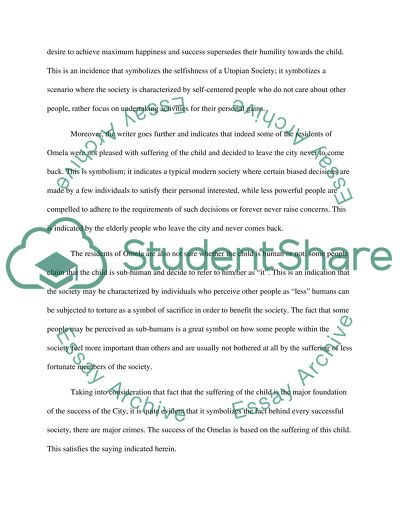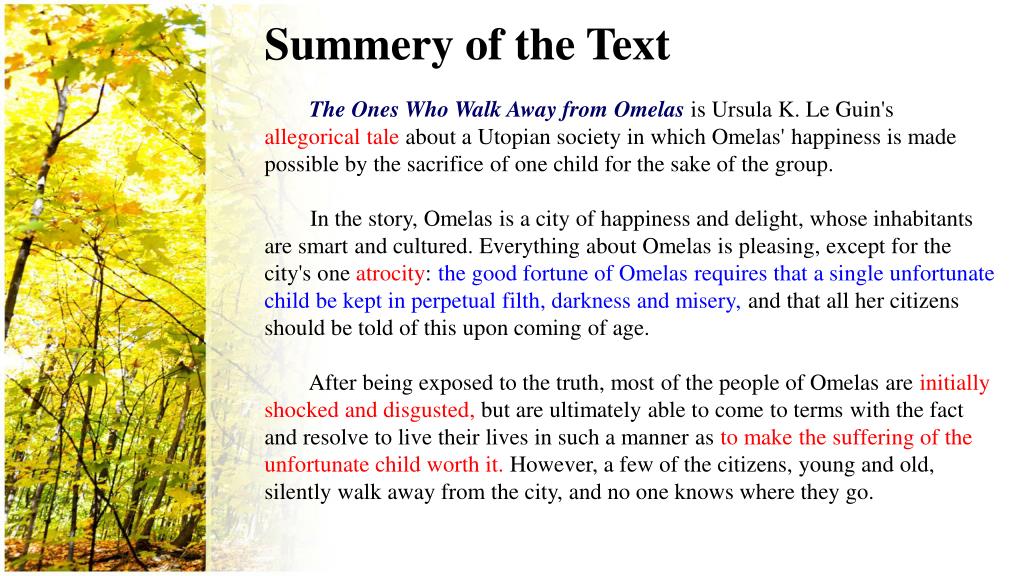

The narrator checks in with their audience throughout the story: “Do you believe? Do you accept the festival, the city, the joy? No?” The narrator does not take an authoritative stance on Omelas’s reality-they ask the audience to authorize the reality of Omelas for themselves. Perhaps it would be best if you imagined it as your own fancy bids, assuming it will rise to the occasion, for certainly I cannot suit you all.” The narrator admits that they alone cannot convince the audience of this make-believe city-the reader must work in tandem to color Omelas for themselves. For example, LeGuin writes, “Omelas sounds in my words like a city in a fairy tale, long ago and far away, once upon a time. When the allegory becomes apparent at the end of the story, the audience sees how their imaginative capacities reflect their own reality. As they invest more in imagining the city, the reader becomes complicit in building the world of Omelas.

The narrator emphasizes their presence as storyteller, inviting the audience to imagine Omelas with them.

LeGuin shows her audience just how valuable imagination is by revealing how it can illuminate the reader’s own life in a completely new way. Omelas starts as an imaginary land, but eventually becomes so real to the reader that they recognize Omelas as an allegory-not a fairy tale place, but a city full of people who face the same moral questions they do. By the time the story ends, the reader has grappled enough with this decision to recognize how familiar it is to their own world. By the time the suffering child is revealed, the reader is so deeply involved in Omelas that they are forced to consider what decision they would make. As the reader pictures Omelas more and more clearly, they become more and more complicit in the world they have built. LeGuin highlights the imaginative act of storytelling by emphasizing both the narrator and reader’s fabrication of Omelas. The narrator does not care if the reader knows Omelas is not real, so long as the city feels real to them personally. The narrator invites the reader to imagine Omelas as they wish.


 0 kommentar(er)
0 kommentar(er)
